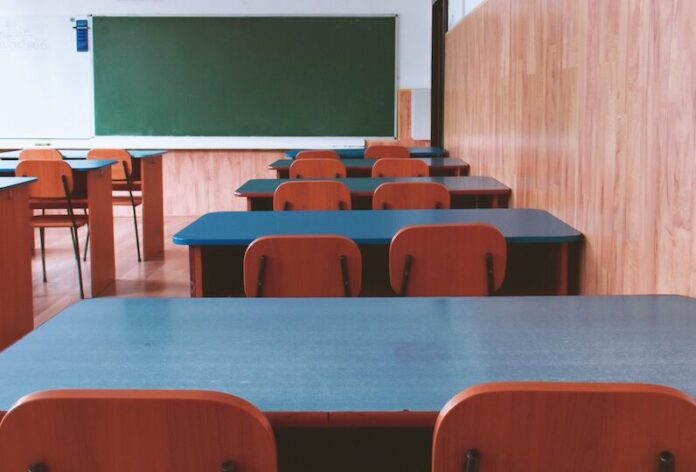At the Dec. 15 meeting of the Windsor Unified School District Board of Trustees, the final school sites presented their reports on the implementation of the 2019-20 School Plans for Student Achievement and presented their goals for the coming school year.
Like most things this year, implementation of the previous year’s goals was spotty due to the impacts of the COVID-19 pandemic.
Mattie Washburn, Brooks Elementary and the North County Consortium presented their SPSAs at a previous meeting, this time it was Windsor Middle School, Windsor High School, North Bay Met Academy, Windsor Oaks Academy, Cali Calmecac Language Academy and the Village Charter School.
Windsor Middle School
The three goals Windsor Middle School set for the 2019-20 school year were improving achievement in mathematics and English language arts, improving their reclassification rate and reducing the suspension rate.
However, none of the goals were fully implemented because of the March school closure due to COVID-19. While they did improve in some areas, a lack of year end evidence due to their being no assessments, makes a true evaluation of success impossible.
For 2020-21, WMS has set the following goals.
1A. Increase the iReady assessment participation rate from 85% (Fall participation) to 95% [Baseline = minimum participation rate for SBAC].
1B. 36% of students will meet or exceed standard on the May 2021 iReady reading diagnostic assessment. [Baseline = 36% (January 2020)]
1C. 36% of students will meet or exceed standard on the May 2021 iReady math diagnostic assessment. [Baseline = 36% (January 2020)]
2. Increase the progress toward annual typical growth by 27 points (which represents one-year’s growth from their baseline) for English Learner students on the iReady assessment in the areas of reading and math.
3. Match the D/F rate from March 1, 2020 to March 1, 2019 by reducing the overall number of students receiving a “D” or “F” in ELA from 38% to 14% and in math from 35% to 16%. For Hispanic/Latino students, ELA from 51% to 19% and in math from 54% to 23%.
Windsor High School
The first goal for 2019-20 was Windsor High School will focus on data-driven decision making through identification, administration and analysis of common assessments administered over the 2019-20 school year. Departments/subject level will analyze common assessments. Gaps in learning will be identified and addressed through data disaggregation.
This goal was only partially met, because though math and reading both used iReady as a common assessment, other subjects did not. In addition, staff was not adequately trained to disaggregate the data, therefore baselines were not established.
Goal two was to continue to strengthen college and career exploration and academic goal setting as measured through increased junior participation rates in college assessments, with a goal of increasing the number of juniors who sign up for the PSAT by 10%. This goal was met, because 19% more took the test. This was met because the school paid for the tests.
For the 2020-21 school year, Windsor High School will set three goals, including a 5% increase in/on or above grade level in math and reading scores based on 2019-20 iReady baseline data (Reading 32%, Math 20%); a 10% increase in the amount of students taking the Local Control Accountability Plan (LCAP) survey that strongly agree that they have an adult on campus they will seek out if they have a problem. (28% of students taking the 2019-20 LCAP survey strongly agreed they have an adult on campus they will seek out if they have a problem.); and a 10% increase in “parents strongly agree” that WHS keeps parents informed about student activities. A baseline of 20% was established based on the 2019-20 LCAP survey.
Windsor Oaks Academy
Windsor Oaks fared better in some ways than other schools, with two of their three goals for 2019-20.
The first goal was to increase average daily attendance (ADA) by .5% from 70% to 70.5%, and this goal was met at a cost of $1,150. In fact, the principal Forrest Harper stated that attendance had actually improved during distance learning.
The second was for 80% of the 12th grade students who enrolled in the school for at least one semester to attend one job shadow experience and one information interview no later than the last day of school for the first semester or second semester. For obvious reasons this goal was not met due to the COVID-19 pandemic. This is especially challenging as this would have been the first year this was offered to WOA students, and according to Harper, making this culture change has proven difficult with continued shutdowns.
The final goal was to increase the graduation rate by 5% from 40% to 45% in 2020. This goal was also met, with a graduation rate of 53% at a cost of $1,500.
The 2020-21 goals will build on the previous years’ goals by increasing ADA from 70.5% to 80%; getting 80% of the 12th grade students who have been enrolled in WOA since their junior year to attend one LTI or one Leaving to Learn by their second semester of WOA; and increasing the graduation rate from 45% to 60%.
North Bay Met Academy
NBMA also did fairly well despite the challenges of the year. Their first goal was to use Big Picture Learning’s 10 Expectations criteria to increase the expectation “relevance” to “developed” or “well developed” by at least 3% from 67% from the spring 2019 student survey to 70% in the spring 2020 student survey. This goal was met, with 75% of students reporting themselves to be “developed” at a cost of $500.
The second goal was that at the end of year a schoolwide iReady matched cohort would be 2% higher in reading and math than beginning of year. This goal was not met due to the COVID-19 pandemic and being on distance learning, though $5,000 was spent on the system.
The final goal was to increase 2019-20 ADA by 1% from 65% in 2019 to 66% in 2020. This goal was met with a 94% attendance rate, as NBMA also reported better attendance after distance learning began.
The 2020-21 goals for NBMA have reduced to two, with the first being to increase 2020-2021 enrollment from 66 students in 2020, to 73 students in 2021, and the second to experience growth in math can reading assessments, by the end of the year, from to 6% to 10% for math and 23% to 30% for reading.
Cali Calmecac Language Academy
Cali does not have SPSA goals from the 2019-20 school year because by state law they were supposed to write and LCAP instead. However, the LCAP goals and findings are centered on the SBAC test, which was not administered due to the COVID-19 pandemic.
They did purchase an additional assessment tool to at least give them some sense of their students achievement, according to principal Sharon Ferrer, though they then had to “norm” the data to be able to do any comparisons.
The three goals Cali is setting up for the 2020-21 school year are as follows: Reading (Grades 3-8), English growth from 28% in T1 to 58% in T3 and Spanish growth from 47% in T1 to 58% in T3; Math 7th-8th (in English) growth from 35.5% in T1 to 42% in T3, 3rd-6th (in Spanish) growth from 63.7% in T1 to 65% in T3; and English Language Development (TK-8) growth from 43.1% in 19-20 to 45% in 20-21
Village Charter School
The goals for 2019-20 included increasing student achievement for all students and subgroups by implementing math and reading intervention programs for students who are not reaching grade level standards; close the achievement gap by providing quality and targeted interventions to English learners; and improve school climate and parent communication.
The school supported these priorities by increasing TA hours and after school support programs for all students and subgroups. However, due to evacuations, public safety power shutoff days and shelter-in-olace, expenditures towards these priorities was approximately $126,000 lower than originally projected.
In general, VCS didn’t implement the way they wanted, but in the end they did create a distance learning program that is showing a good results
For the coming year, they’ve set their SPSA goals as follows. In English language arts, an increase in achievement for all students and subgroups from 85% to 88% as measured by a variety of assessments, assuming they are administered this year.
In math, increase achievement for all students and subgroups by 5% as measured by a variety of assessments and increase the number of students grades 3-8 that meet or exceed standard to 55% (10% increase in performance) on CAASPP. They also want to close the performance gap between males and females by 10% on CAASPP (if test is administered).
Finally, they want to continue working on school climate and parent communication, including continuing to have festivals and other community events that support the social, emotional and academic needs of all students, along with continuing to hold monthly PA meetings and quarterly classroom meetings with a goal of 80% attendance.









